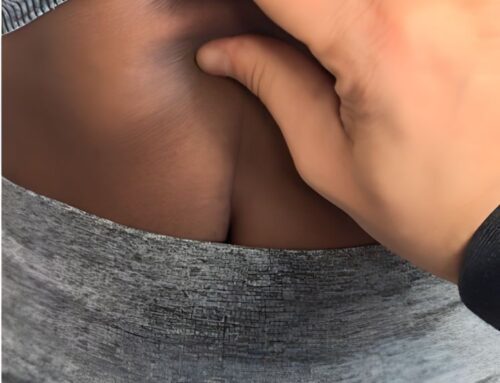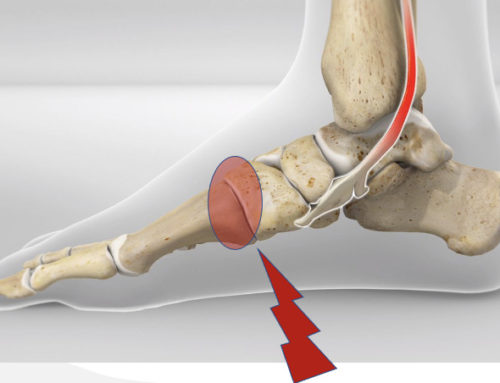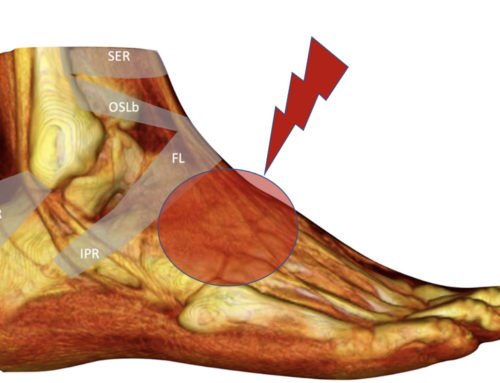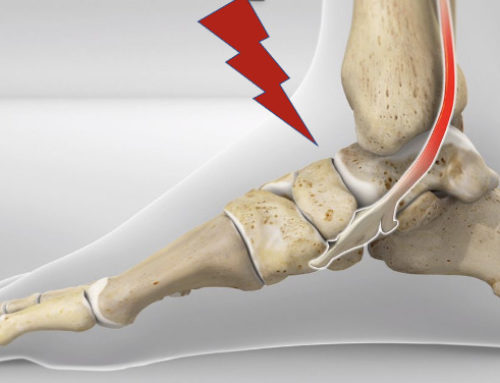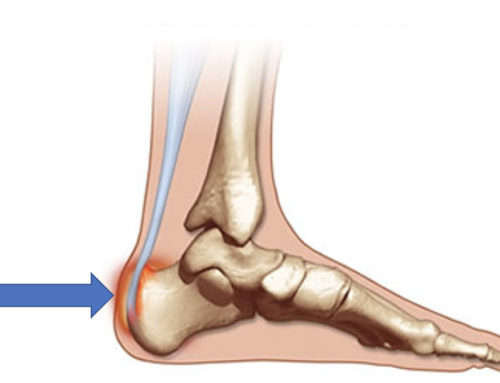Tibial Nerve: Tibial Nerve Dysfunction And Tarsal Tunnel Syndrome
The origin of the tibial nerve is the nerve roots of the lower back (L4-S3). The bifurcation (splitting) of the sciatic nerve at the popliteal fossa (behind the knee) creates the tibial nerve. The tibial nerve then runs along the back of the leg giving motor and percutaneous sensory branches in close proximity to the tibialis. The nerve travels with the tibialis muscle until it reaches the foot with another bifurcation (after the tarsal tunnel) into the medial plantar nerve and lateral plantar nerves. The percutaneous branch shows tactile sensations to the bottom of the foot. Tibial Nerve dysfunction, compression, or neuropathy occurs when a local mechanical block, repetitive stress (sports injury) or referral from the lower back occurs.
This article will explore and address these three common tibial nerve dysfunctions or compression symptoms that cause neurologic sensations, pain in the lower leg, ankle, and foot.
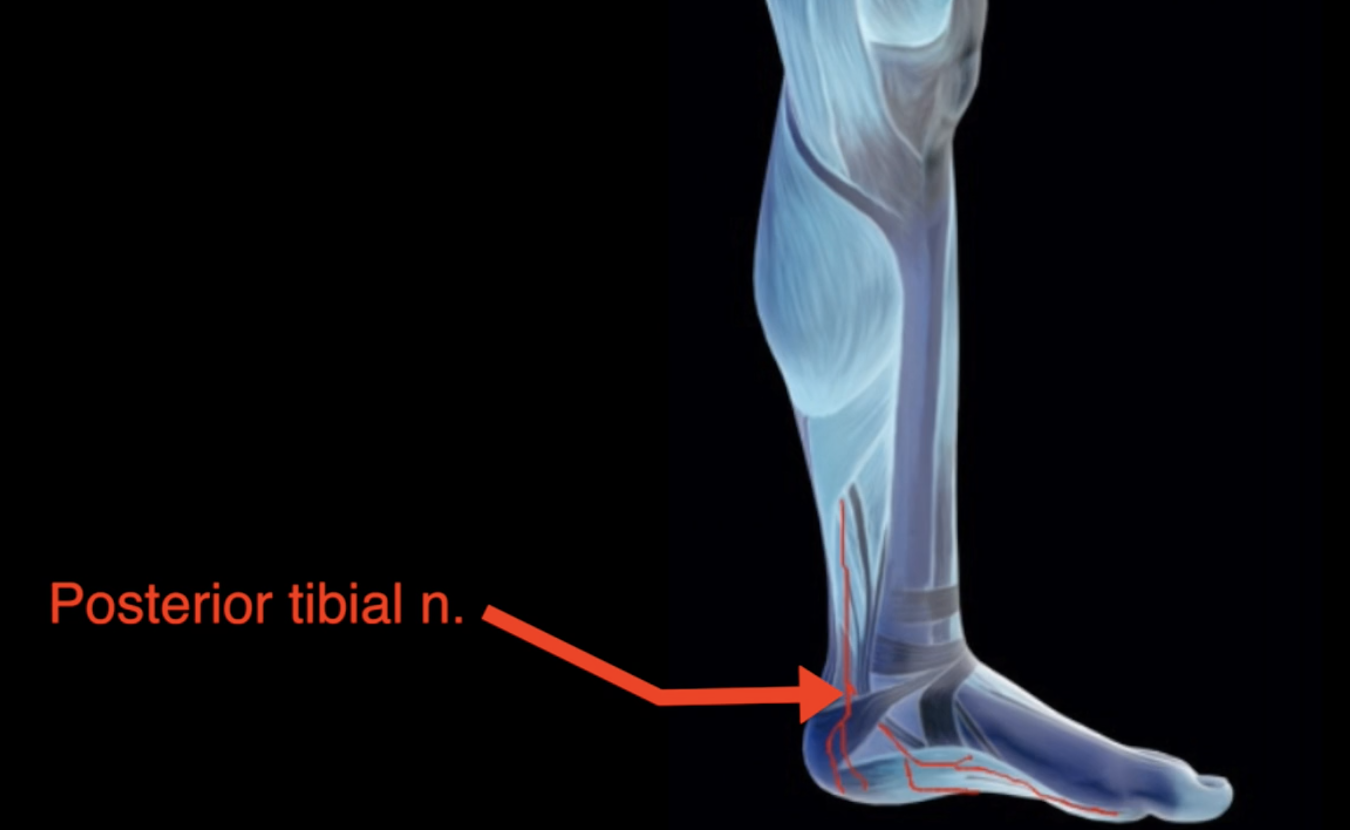
Entrapment
There are two major sites of the entrapment that cause compression of the tibial nerve, behind the knee, with the posterior tibial nerve running along with the tibialis posterior and at the ankle in the tarsal tunnel. The latter is known as Tarsal Tunnel syndrome. If either location becomes a site of compression for the tibial nerve, then symptoms can occur.
Symptoms
- Neuropathy occurs with compression of peripheral nerves and has symptoms such as burning, numbness, tingling, weakness of foot muscles, ankle, or toes (curl toes)
- Pain or stiffness in the calf, inner shin, inner ankle, or arch of the foot
- Often asymmetrical strength in number reps of calf raises (test yourself)
Treatment
- Pain or stiffness in the calf, inner shin, inner ankle, or arch of the foot
- Often asymmetrical strength in number reps of calf raises (test yourself)
- Tibial Nerve Stretching
- Address excessive or poorly controlled pronation
- Normalize foot tripod
- Ensure big toe has a normal range of motion
- Address tight calf muscles such as tibialis posterior
Sports Injuries
Due to the repetitive stress associated with sports like running or high-impact injuries such as ankle sprains the tibial or any peripheral nerves can become injured by being overstretched. Once an overstretch injury occurs, inflammation can create a fluid-based compression of the posterior tibial nerve which limited the nerves’ ability to heal due to poor axonal transport (food highway). If this becomes chronic then scar tissue can create an entrapment (see above). This occurs most frequently as part of the tibial nerve near the tibialis posterior or posterior tibial nerve at the tarsal tunnel. Both are considered to be an injury to the tibial nerve.
Symptoms
- Pain and swelling local to the site of injury
- Numbness, tingling, and weakness could be present in the acute phase
- Chronically stiff hamstring, calf, ankle, arch, and foot. Overall mobility can be limited in the leg.
Treatment
- Tibial nerve stretching
- Manual release of soleus, tibialis posterior, and tarsal tunnel.
- Ankle mobilizations to increase dorsiflexion
- Cupping of tibial nerve with heel raises
Lower Back Referral
The Tibial Nerve is a large terminal branch of the L4, L5, S1 S2, and S3 nerve roots (peripheral nerves) after the sciatic nerve separates behind the knee. Therefore, any problem in the lower back such as disc herniations or L4-S3 nerve root compression can refer to pain in the peripheral nerves distribution of the tibial nerve or any of its smaller branches like the medial or lateral plantar nerves.
This is one of the most missed causes of peripheral nerves causing lower leg pain. This mechanism of pain is missed because oftentimes the low back doesn’t hurt and thus is never examined!
Symptoms
- Pain below the knee that is brought on when touching toes (nervous system stretch)
- Lower back nerve release position reduces pain
Treatment
- Tibial nerve stretching and fascial release of hamstrings and calf muscles
- Treatment of low back
GET IN TOUCH WITH DR. DEAN
YOU should be able to move the way you’d like to move without experiencing pain. YOU should be able to experience freedom and energy knowing there’s nothing holding back from giving your life 110%. Dr. Dean would like to learn more about your challenges with a quick phone or email before beginning treatment. Contact him today.
